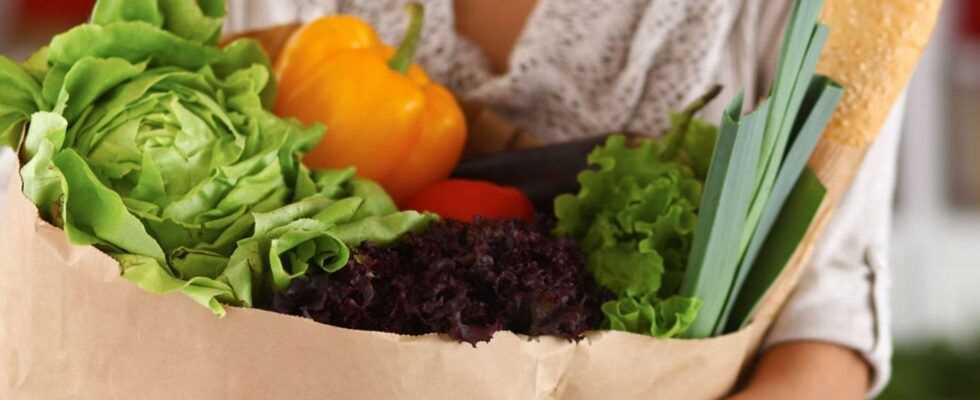Day after day, groceries are thrown away in our kitchens. We could save them from their fate with little tricks. We'll show you how.
You probably know that too: You bought a few things for the weekend in the supermarket – only to find out that there is still a pack of brown sugar in the back of the kitchen cupboard and that behind the half-full pack of milk in the refrigerator there is a second, unopened one stands. This is particularly annoying because both packs are approaching their best before date. At least one of them will go to waste.
Every year every German throws in this way 82 kilograms of food – that is about two fully packed shopping trolleys, according to a report by the Federal Ministry for Food, Agriculture and Consumer Protection. In its Life-at-Home report, IKEA asked more than 8,500 people in New York, London, Paris, Berlin, Stockholm, Moscow, Mumbai and Shanghai about their everyday cooking and eating habits. The result: 20% of the respondents stated that they regularly buy food twice – and having to throw something away in the end. But why is that and what can we do about it?
1. Unplanned shopping
Do you prefer to go shopping spontaneously and let yourself be inspired by the selection? Then you run the risk of just randomly putting something in your shopping cart – without having a concrete use for it. The result: The pleasure purchases end up somewhere in your kitchen cupboards and are immediately forgotten. If they have been there for a while, they will soon be displaced by the next spontaneous purchases – and end up in the trash.
This helps: Make a plan of what you want to eat and when, and go shopping specifically. While you your Shopping List write, you can check in the kitchen at the same time what you have left and what you may need more supplies for – and in what quantities. Everything you buy will be used up within the next few days. If there is anything left over, you can draw inspiration for your next shopping list. For example, if you have a particularly large amount of tomatoes left over, think about what you can do with them and put the missing ingredients on the new shopping list.
Tip: try meal prep. This easy method will solve most of your food problems in one go. And did you know that a proper kitchen can help you lose weight?

2. Confusing kitchen cabinets
Out of sight, out of mind: food we can't see are forgotten. In the farthest corner of our kitchen cupboard they eke out their existence until we discover them at some point (at the latest when moving) and the long-expired lasagna plates, baking ingredients and dried fruits go straight to the trash.
This helps: Create an overview in the kitchen and keep things tidy. Sort your kitchen cabinets so that you can get an impression of their content at a glance. So you always know what you have there. Disposable glasses and similar transparent containers help you with this – and are also easy to stack. Also, go through your kitchen cupboards regularly and see what needs to be used in the near future. Then you can start looking for suitable recipes.
3. Chaotic storage
After shopping, the fresh groceries are put in the fridge – so far so good. Unfortunately, the old yoghurt pots, cream cheese packs and cheese slices move further and further back towards the wall, while the new purchases remain clearly visible in the front. The half-used creme fraîche patiently waits in the back until it has passed its best-before date and begins its last journey in the trash.
This helps: Take a little moment to sort your purchases reorganize the refrigerator. New foods with a longer shelf life go to the back, what has to be consumed soon comes to the front. So it stays in the visible area – and thus in your consciousness. If you see the half-empty yogurt in front, you are also more inclined to treat yourself to it for dessert. Avoid food waste!
Tip: fill up opened food in cans and other storage containers around. Not only do they keep things tidy, they also keep food fresher for longer.
4. Unusual ingredients
Whether exotic spices – green paprika powder, galangal or tonka beans – or unusual oils, sauces or grains – if we have one Need to buy exceptional ingredient extra for a recipe, there is a high probability that any leftovers will end up in the trash sooner or later. Because what you haven't used before, you probably won't need it either.
This helps: See if you can replace the special ingredient with something that you either already have in the house or that you can use in other dishes. Sometimes the special spices are just an expression of the cook's particular eccentricity, but they can do very well be replaced by common household products. Alternatively, you either buy very small amounts of the ingredient you need so that there are no leftovers, or you can look for other recipes that will also need them to use them up.
These four simple tips should be a quick way to reduce food waste from your kitchen.
